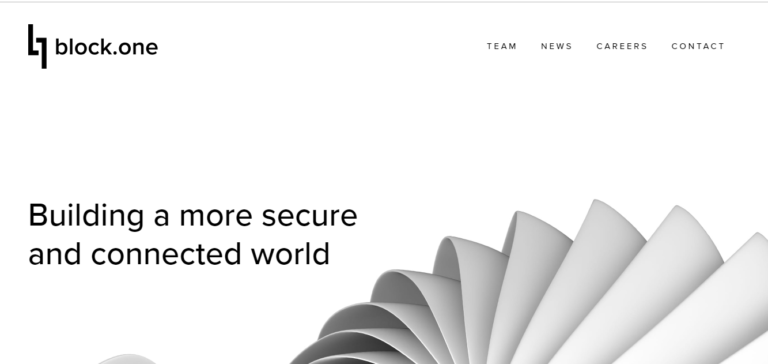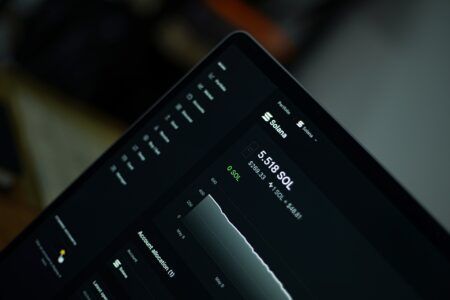Block.one, the Cayman Islands-registered tech firm that raised a record $4 billion through an initial coin offering (ICO) to help fund the development of EOS, a blockchain-based platform for creating decentralized applications (dApps), recently published an update regarding EOS’ adoption rate and network performance.
dApps Built On Other Networks Are Migrating To EOS?
In the blog post, EOS’ development team noted that there are currently “at least 260” different projects “being built” (according to DAppRadar) on the third-generation blockchain-powered platform. Going on to mention that “it is unclear” whether it’s a “record in terms of blockchain adoption”, Block.one’s blog post claims more individuals and organizations are choosing EOS to deploy dApps, instead of the alternatives.
The blog also states that “decentralized blockchain applications built on other blockchains are migrating to EOSIO.” However, the post doesn’t share any details regarding which projects have successfully migrated to EOS from other platforms – except for linking to an article about Ethereum-based decentralized “liquidity network” Bancor moving to EOS.
According to Block.one, EOS has become the leading blockchain development platform because of the “radical improvements” it offers in terms of “speed, cost, scalability and sustainability.” Moreover, Block.one’s blog links to a website called Blocktivity.com which appears to show that EOS is the most active blockchain.
EOS-based dApps Include “Ride-Sharing” & “Fitness Tracking” Programs
Block.one also claims that EOS “is the most used blockchain software in the world” and that all apps built on it have “real-world utility.” Some of the dApps being built on EOS include ones for “ride-hailing”, “music sharing”, “fitness tracking”, and “digital payment”, the blog states. The post by Block.one shares a statement from Simon Szczepankowski, the CEO of Buddy (a smart contract delivery platform):
EOSIO, with its ability to process thousands of transactions per second, and its minimal associated fees and confirmation times, is the best next-generation blockchain.
After conducting market research, EOS’ developers have concluded that the smart contract-enabled dApp creation platform is “scalable.” At present, EOS “has been benchmarked to process 4,000 transactions per second” (TPS), while “some existing blockchain systems” can only handle 15-20 TPS, the blog post noted. If true, then this would mean EOS is currently processing transactions “200 times faster” than competing networks.
EOS-based Apps Have “Much Lower Latency”
On private chains, the developers of Block.one claim EOS can handle “even higher speeds with recent software updates.” Compared to other alternatives, EOS is also faster, the blog states. As explained in the post:
Applications built on EOSIO have much lower latency than those on other blockchain platforms … you won’t have to wait hours or even minutes to know if your email was sent, your payment was processed, or your food order actually went through.
Block.one’s post also notes that EOS ranks high in terms of user experience as those using EOS-based software programs don’t even know they’re using a blockchain-powered app.
Alex Casassovic, the creator of EOS-based gaming “challenges” app called Azarus, has said:
With EOSIO, users can interact with the blockchain without having to know how it works.
The key driver of blockchain adoption is speed, convenience, and new users not having to learn what a blockchain is and how it works, the blog notes.
EOS Is “Virtually Free” To Use
Another advantage of using EOS to develop dApps is that “it’s virtually free.” That’s because there are no transaction fees charged on the EOS platform. As explained in Block.one’s official post:
From a consumer standpoint, whereas individual users have to pay per transaction in order to use first-generation blockchain apps, EOSIO apps are free to use. From a developer standpoint, the operating cost of running an EOSIO network is akin to that of maintaining a traditional server.
Finally, the blog post published by Block.one mentions that blockchain development with EOS is eco-friendly. Because EOS uses the delegated proof-of-stake (DPoS) consensus mechanism, which does not require the energy-intensive process of mining, “it is a far more sustainable solution”, Block.one’s developers claim. Notably, calculations performed by ‘social enterprise block producer candidate’, Genereos found that EOS is “66,000 times more energy efficient than Bitcoin and 17,000 times more energy efficient than Ethereum.”
In December 2018, cybersecurity research firm, PeckShield published the findings of its research which found that only 120,000 out of an estimated 500,000 EOS accounts are currently active. Researchers at PeckShield also discovered that more than 200,000 (about 37%) EOS accounts have been inactive since creation.
27 EOS-based dApps Have Major Vulnerabilities
Shi Huaguo, the senior security researcher at PeckShield, observed:
dApps on EOS started to explode since September 2018, and the number grew rapidly in October. But with EOS, [dApps] are getting hotter [or being widely-used], [however] the group-controlled accounts [have also] started to emerge.
Out of more than 571,000 EOS accounts created, security firm PeckShield found that the creators of the group accounts, which are controlled by several users, were likely being used by crypto bounty hunters or “click farms.” The researchers also determined that the type of activity carried out through the accounts was not healthy for the long-term sustainability the EOS network
Significantly, PeckShield’s researchers identified 27 dApps with major vulnerabilities, however these security issues were not directly related to problems with the EOS blockchain network, the researchers said. Due largely to the security vulnerabilities, the users were able to conduct many attacks – which reportedly led to losses of more than 400,000 EOS tokens (worth about $700,000 at the time of the security breaches).
Likely To Be More Attacks Launched On EOS-based dApps
Guo Yonggang, a Chinese cybersecurity researcher, revealed that the attacks carried out on EOS-based dApps exposed several types of vulnerabilities. But he confirmed that these security holes were not linked to any design flaws related the EOS network itself. Yonggang added that there may be many hackers actively trying to look for vulnerabilities on the EOS platform. This, he argued, shows that there might be more attacks which could be launched on EOS-based dApps in the foreseeable future.
The EOS blockchain uses the DPoS consensus algorithm, which requires that EOS token holders cast votes for electing block producers (transaction validators). Notably, a few of these “democratically” elected block producers, or delegates, were found engaging in mutual voting and “payoffs” in late September 2018. The reports regarding collusion among EOS’ block producers surfaced when an EOS investor with the Twitter name Maple Leaf Capital (@MapleLeafCap) shared a leaked document showing that certain block producers were, in fact, colluding.








